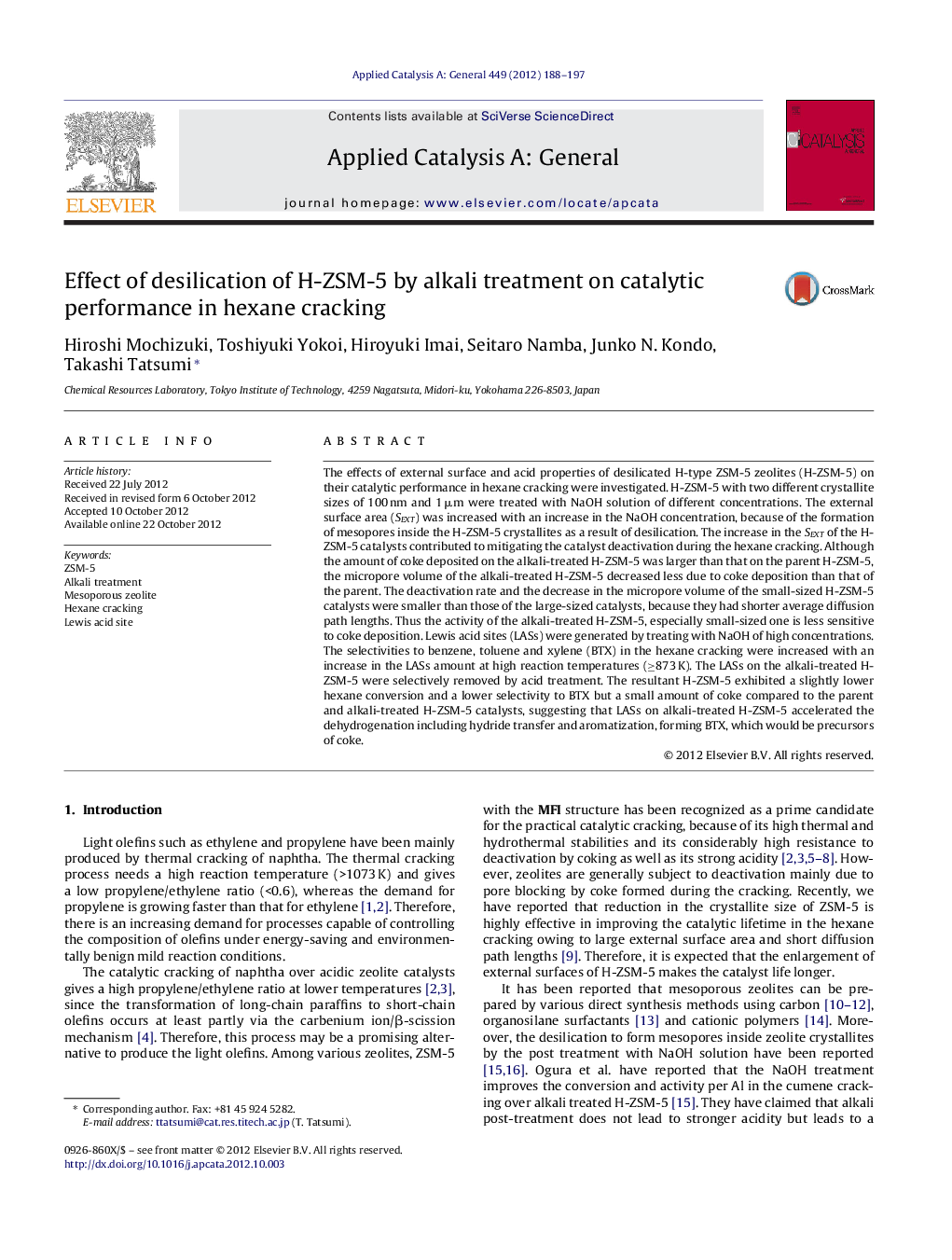| کد مقاله | کد نشریه | سال انتشار | مقاله انگلیسی | نسخه تمام متن |
|---|---|---|---|---|
| 40762 | 45864 | 2012 | 10 صفحه PDF | دانلود رایگان |

The effects of external surface and acid properties of desilicated H-type ZSM-5 zeolites (H-ZSM-5) on their catalytic performance in hexane cracking were investigated. H-ZSM-5 with two different crystallite sizes of 100 nm and 1 μm were treated with NaOH solution of different concentrations. The external surface area (SEXT) was increased with an increase in the NaOH concentration, because of the formation of mesopores inside the H-ZSM-5 crystallites as a result of desilication. The increase in the SEXT of the H-ZSM-5 catalysts contributed to mitigating the catalyst deactivation during the hexane cracking. Although the amount of coke deposited on the alkali-treated H-ZSM-5 was larger than that on the parent H-ZSM-5, the micropore volume of the alkali-treated H-ZSM-5 decreased less due to coke deposition than that of the parent. The deactivation rate and the decrease in the micropore volume of the small-sized H-ZSM-5 catalysts were smaller than those of the large-sized catalysts, because they had shorter average diffusion path lengths. Thus the activity of the alkali-treated H-ZSM-5, especially small-sized one is less sensitive to coke deposition. Lewis acid sites (LASs) were generated by treating with NaOH of high concentrations. The selectivities to benzene, toluene and xylene (BTX) in the hexane cracking were increased with an increase in the LASs amount at high reaction temperatures (≥873 K). The LASs on the alkali-treated H-ZSM-5 were selectively removed by acid treatment. The resultant H-ZSM-5 exhibited a slightly lower hexane conversion and a lower selectivity to BTX but a small amount of coke compared to the parent and alkali-treated H-ZSM-5 catalysts, suggesting that LASs on alkali-treated H-ZSM-5 accelerated the dehydrogenation including hydride transfer and aromatization, forming BTX, which would be precursors of coke.
Figure optionsDownload high-quality image (115 K)Download as PowerPoint slideHighlights
► The enlargement of the external surface area of ZSM-5 suppressed the pore blocking by coke formation.
► Lewis acid sites are generated by the alkali treatment and removed by the subsequent acid treatment.
► Lewis acid sites accelerated the aromatization and the coke formation in hexane cracking.
Journal: Applied Catalysis A: General - Volume 449, 27 December 2012, Pages 188–197